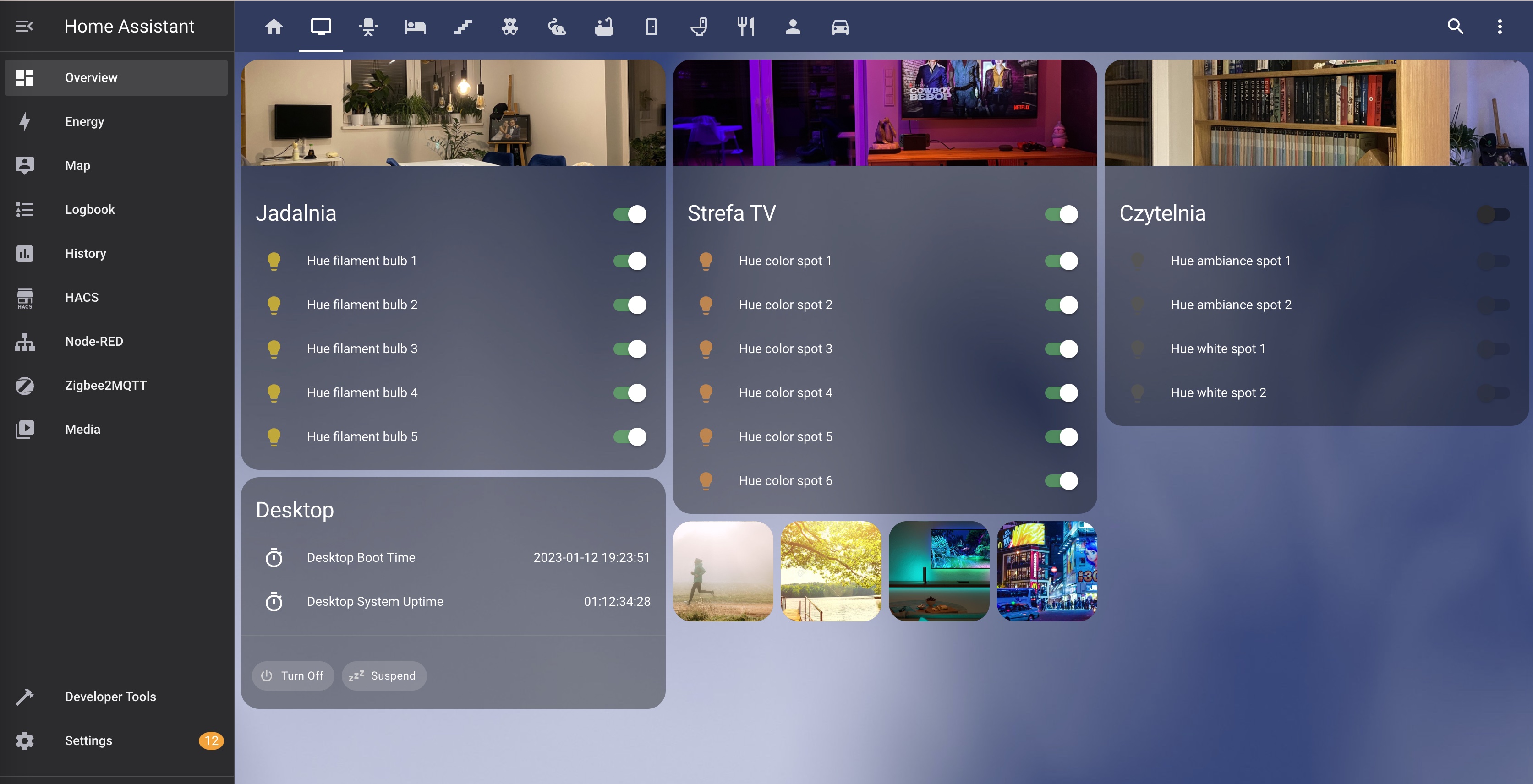Two weeks ago we had a year-end review, last week a vacation, but we are finally back with a kick to the regular Sunday editions.
1. Matter reigns supreme at CES 2023
For the reasons stated above, I missed one of my favorite annual traditions – describing the latest gadgets at the CES event in this review. Now it’s a bit of a doozy, since color-changing chameleon-like or electronics-laden quasi-cyborg cars or wireless TVs have already been both written about and forgotten by the entire Internet.
Therefore, all that’s left for me is to pick up the scraps and think about what we’ll be left with after CES. And this something is certainly the breakthrough of Matter into the mass consciousness.
Matter (formerly known as Project Connected Home over IP) is a new smart home interoperability protocol introduced through a joint effort by a handful of major industry players. The whole thing is an “overlay” over the Thread protocol, already supported by many devices, and aims to be able to eliminate all “hubs” as each device has its own unique IP address. More than 170 companies are involved, including major players in the market. The project aims to unify, among other things, the way voice assistants and related platforms work. As a result, any hardware that can handle Google Assistant will also be able to be natively hooked up to Apple HomeKit, without the need for weird Home Assistant-type pass-throughs. Instead of a whole closet of different bridges or hubs, we’ll have one focused on automating the whole thing, being able to communicate with all the smart stuff at home.

Matter, however, has some problems. Yes, the likes of Amazon and Apple have already added support for it as part of their SmartHome gateways, and the first devices with updates for the new protocol are appearing (its big advantage is that in many cases support can be implemented software-wise). For now, therefore, we are pretty much at the mercy of the manufacturers and their plans to update existing products. However, the situation should improve soon, when a whole range of devices that support Matter by default, day-zero, will hit the stores.
CES showed that this awaits us sooner rather than later. It was for the first time at this trade show that it was evident just how widespread adoption of the new protocol has become. In fact, every single SmartHome device shown at the fair boasted support for Matter, which bodes very well for the future. Admittedly, we’ve historically had a few such Holy Grails already (anyone remember Z-Wave?), but Matter certainly has a chance of becoming more than a fad. You can find a little more about specific examples of Matter devices in the text Why Matter mattered at CES

Sources

2. A tale of two modern-day Robin Hoods

The first is Belarus, which is trying to cope with Western sanctions and lack of access to intellectual property. It turns out that many Western licensors have withdrawn from this market, and many entities operating in the country – such as cinemas, but also companies using specialized software – have lost the ability to legally purchase the necessary licenses. In this situation, the state decided to step in, trying to solve the problem in question with an additional piece of legislation. I have to admit that behind the headlines “Belarus has legalized piracy” there is a quite cleverly constructed law. After all, its implementation does not make any regulations suddenly cease to operate there – simply the Belarusian state has stepped into the role of an uber-licensor here. In practice, it boils down to the fact that if an entity from an “unfriendly” country does not decide (or does not have the ability) to grant a license, the Belarusian National Intellectual Property Center will do it for it. This in turn will store the funds for up to three years, until the original creator claims them. The whole thing is very clever – the procedure continues to retain the appearance of legality, the authority will receive the money, and the legislature authorizes it to collect up to 20% of the fees for carrying out the operation.
The second of the aforementioned Robin Hoods is the European Union (or rather, the European Commission), which has long taken it upon itself to siphon money from Big Tech. This time we’re already entering territory familiar to us from discussions in the United States, that is, cost-sharing in the creation of network infrastructure by those who are most burdensome users of it. This is because several large Telcoms from Europe (including Orange and Deutsche Telekom) would like to see companies such as Amazon or Google (and many others) “contribute” to investments in the Old Continent’s infrastructure. The European Commission is expected to present its position on the subject as early as March, while for the time being it is analyzing to what extent this move would reduce the quality of service in Europe and how much similar measures would affect the end consumer.
I’ll admit that I personally understand similar measures in some ways, just as I’m a moderate supporter of regulations like the DMA. My only fear is to what extent a similar tax would actually increase investment in European Internet connectivity (as recently as last year there was a report revealing that Alphabet, Meta, Netflix, Apple, Amazon and Microsoft combined account for nearly 60% of network traffic), and to what extent this is an attempt to tap into the popular recent trend of trying to placate various markets with anything from Big Tech. It’s not 2021, however, and given the macroeconomic situation and further declines of companies on global stock markets, these are unlikely to give up without a fight.

Sources
- Belarus Legalizes Piracy of Movies, Music & Software of ‘Unfriendly’ Nations
- EU plan to make big tech pay ‘fair share’ of telco fees reportedly weeks away
- Telcos fear Big Tech will bleed them until they can’t afford network builds

3. Beginning 2023 brings solutions to make AI voice generation even simpler
And finally, lest you forget what “Weekly” you are reading – there will be a piece about a generative AI. And it will cover developments by two companies – Apple and Microsoft.
Let’s start with the former. Well, Apple last week announced the “democratization” of audiobook creation tools. After all, while Self-Publishing when it comes to written content has been changing the reality for independent writers for many years, when it comes to audio one going it alone is much more difficult. More money, access to partners, and a recording studio are necessary to release an audiobook. Admittedly, there have been attempts over the years to use voice synthesizers to cope with this problem, but these, unfortunately, deviate in quality from professional voiceovers.
Apple last week, however, announced the Apple Books Digital Narration program, claiming that their technology is able to cope with the existing limitations. What is the revolutionary feature? Well, the Cupertino-based company soberly concluded that different types of books require different intonation while reading. Therefore, it decided to create voices adapted not to reading books as such, but specific genres. For now, such voices are available only for romances (a male and female voice), and another two voices for “self-help” books. The voices sound really good (well, maybe except for Helen – somehow she seems strongly mechanical to me), and Apple has already announced that we can expect support for more genres in the future.
But even more interesting is VALL-E, a new voice synthesis AI from Microsoft. The company boasts that it only needs a five-second sample to be able to create a model capable of generating a recording that trumps the currently existing state-of-the-Art solutions. The company released a number of samples, and I must admit that it was really hard to tell in a blind test which ones were recorded and which ones were generated. Anyway, you can check for yourself on the demo page.

Probably in the case of any other company we would be talking about breaking the DALL-E Trademark in the case of VALL-E, but Microsoft has been working very closely with OpenAI for years. And that cooperation is only expected to grow – last week there was a lot of talk about a planned $10 billion investment in the AI giant, and their latest high-profile project, ChatGPT, is about to be integrated with Bing.





